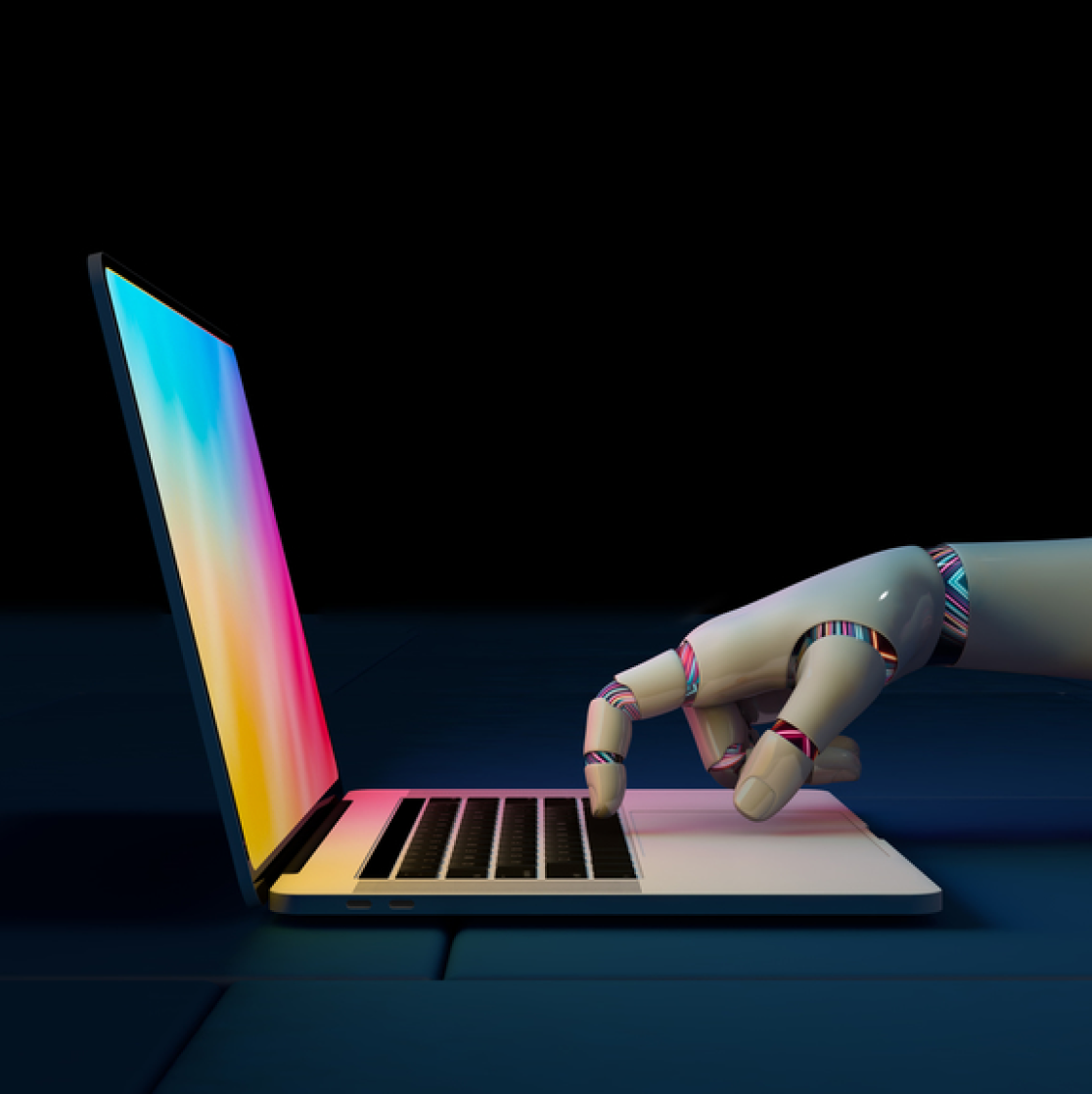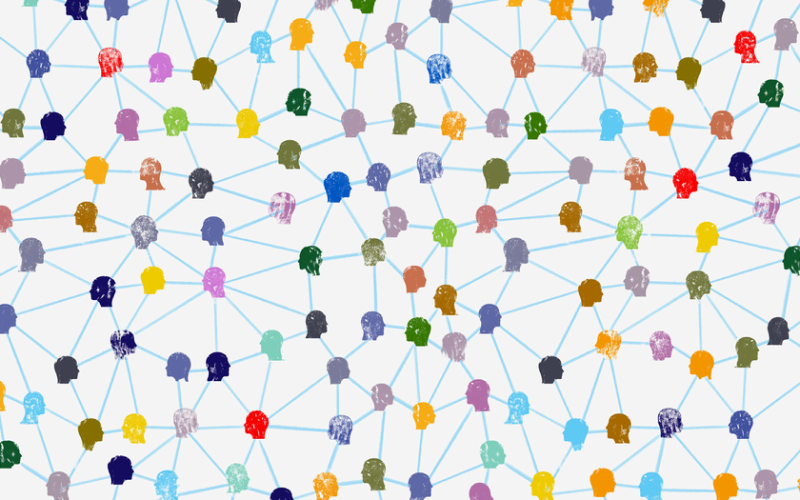Will AI be the End of Data Analysts?
Adapting to the AI Era: Data Analysts Embracing New Opportunities.

In boardrooms, Zoom meetings, and even at the dinner table, AI is the topic of many conversations. With its ever-evolving capabilities, data analysts and company leaders alike all seem to be wondering the same thing: how will AI impact the future of business? And more importantly, what does that mean for me?
The answer is almost as complex as the role of a Data Analyst itself. And while that answer may change over time, today, the role of the analyst is safe. That is, if they evolve to use tools like AI to optimize their job—not replace it.
What is AI?
AI is artificial intelligence, and lately, it also seems to be the talk of the Internet. And for good reason: AI is transforming how businesses work, and who’s working for them.
Defined in 2004 by John McCarthy in this Stanford paper, AI “is the science and engineering of making intelligent machines, especially intelligent computer programs. It is related to the similar task of using computers to understand human intelligence, but AI does not have to confine itself to methods that are biologically observable.”
Today, almost 20 years later, the world finds itself in an AI conundrum. Leaders across a number of industries—specifically executives, researchers, and engineers who are actively working in the field of AI—are signing open letters that detail the urgent risk to not just the future of work, but to the future of humanity.
“Mitigating the risk of extinction from A.I. should be a global priority alongside other societal-scale risks, such as pandemics and nuclear war,” explains this statement released by the Center for AI Safety and signed by founders of OpenAI, Google DeepMind, and Microsoft, just to name a few.
So, does this mean that AI will cease to exist? That the world of work will shift back to “normal”? That roles like Data Analyst won’t be impacted?
Not necessarily.
The Role of the Data Analyst
A Data Analyst is a collector, organizer, interpreter, and problem solver. They use large sets of data to search and find patterns and trends and uncover insights that can influence business strategies and decisions.
To get to that point, Data Analysts start with data collection from a variety of sources. Once they’ve verified that the information is indeed accurate, they analyze it with statistical methods, mining techniques, and visualization tools that help make sense of the numbers.
This part is key to the interpretation of the data: what are the patterns, trends, and insights?
Next, a Data Analyst answers the question “What can we do with this?”.
With reports, charts, graphs, and other forms of visualization and summarization, a Data Analyst will work with different departments, teams, and leaders to provide answers to this question and support the decision-making process. This requires clear and concise communication, and also the ability to understand a company’s and customer’s unique needs, as well as the distinct possibility that both may change over time.
To know if and when to pivot or how agile a plan needs to be, Data Analysts can assist with the monitoring of results. This involves setting up dashboards that track key performance indicators (KPIs), then crafting a data-first approach to any next steps that will keep the strategy current and performing to the needs of the business.
When Two Roles Combine: The Merge of AI with the Data Analyst
By reading the above, one might see where AI can find its way into a Data Analyst’s job description. But does that mean that AI actually poses a threat to this growing field?
To answer that, we have to start at the beginning: how we got here.
In the early 2000s, we started to see the advance of machine learning techniques. These allowed for massive amounts of online data to be analyzed, and conclusions to be drawn.
Ten years later, we entered the phase of deep learning. We saw computer vision that could detect objects (think self-driving cars and the systems that alert them to potential hazards), and voice detection that would allow for speech assistants, like Siri and Alexa, to respond in more natural ways.
Fast forward 20 years, and the world has gone from machine learning to deep learning, and now to generative AI.
In November 2022, ChatGPT officially launched, putting a new way of thinking (so to speak) at our fingertips. Presented with a seemingly-simple tool that could answer our questions, spew facts, synthesize information, and even support campaign strategies and write scripts for commercials, executives and employees alike started to wonder, “What does this mean for me?”.For the Data Analyst, this question can come with a sense of worry, leaving current workers and those interested in the field to think about what the role will turn into, and if they’ll be needed as time goes on.
The truth is, there’s no short answer—and that’s a good thing.
If you look at a data analyst as a driver of an organization, you’ll start to understand how this role is so complex. As a driver, they guide teams forward with data, their conclusions, and their recommendations to move forward.
In this scenario, AI isn’t a threat. It’s an opportunity.

AI as a Tool for Productivity
AI doesn’t have to be a bad thing. When you embrace it in your role as a Data Analyst, you can use it as a tool to boost your productivity and your results.
For example, one of AI’s biggest strengths is to take large sets of data and make sense of it all. That could mean finding patterns and trends, identifying key insights, and then finding ways to report it to the humans who need the information to make the right decisions.
This strength is also a core part of a data analyst’s role, so it’s understandable that the question of “what about me” is top of mind.
To find out, we asked perhaps the most well-known name in AI: Open AI’s ChatGPT.
“While AI has made significant advancements in recent years, it is essential to note that current AI systems are still far from possessing the general intelligence and understanding that humans have.”
It also added, “It’s important to note that while ChatGPT can assist with repetitive tasks, it should be used as a tool alongside human expertise and judgment. Data analysts should validate and critically evaluate the suggestions provided by ChatGPT to ensure the accuracy and reliability of the analysis.”
When this technology is used as a tool to optimize work, not replace it, a Data Analyst can continue to act as the driver—this time with a co-pilot. Here, the Data Analyst is responsible for not only guiding the way and providing a clear path forward but also to make sure that any directions and input their co-pilot is giving is correct and suited for the road ahead—which, as we’re learning, won’t always be the case.
Here’s where Data Analysts can thrive with AI
It’s highly unlikely that AI will go away. And while it may be paused or slowed down so that humans can keep up, it will still evolve as time goes on. And you can, too. In fact, you must.
As technology advances faster than ever before, companies and the people they employ must learn to reinvent themselves and their roles in order to provide the value that’s needed in a generative-AI economy.
So, where to begin? Learning.
In a survey conducted by Accenture, nearly 6 in 10 organizations plan to use ChatGPT for learning purposes, and more than half have planned pilot cases in 2023.
Learning how and when to use generative AI, like ChatGPT, provides us with a deeper understanding of its capabilities, and also its gaps. This becomes increasingly important as the technology evolves without regulation, or acknowledgement of legal and ethical risks that might be encountered without the proper development of the tool itself.
According to this whitepaper by Accenture, “AI systems need to be “raised” with a diverse and inclusive set of inputs so that they reflect the broader business and societal norms of responsibility, fairness and transparency. When AI is designed and put into practice within an ethical framework, it accelerates the potential for responsible collaborative intelligence, where human ingenuity converges with intelligent technology.”
It’s this collaboration that can help you as a Data Analyst thrive.
As critical thinkers, having someone—or something—to work with is a plus for Data Analysts. By using AI in various forms, you can have support in the following areas:
- Pattern recognition: As we mentioned, AI is vital in taking sets of data and making sense of it, which can mean identifying patterns, trends and technologies. Some of these can be hard to spot manually, which is where AI can be handy.
- Communication support: AI can help us determine how to best communicate our findings, and help us develop the correct visualizations to do so. It can also suggest the type of information to include in reports based on various audiences, like an executive versus a coordinator.
- Identifying data sources: AI can support data analysts in the search for information so they can find the insights they need, with hours of research to get to the starting point.
- Data preparation: AI can assist in automating the tasks of data cleaning and integration, which means data analysts can have support when looking for and addressing missing values or inconsistencies in their datasets.
Every Data Analyst can thrive using AI, but only if you’ve been provided with the best learning tools and opportunities available.
A constant evolution
To say that AI is here to stay is an understatement. AI will continue to evolve, learn, and grow, taking on more capabilities than ever before. And to keep up, data analysts also need to evolve, learn, and lead. Now isn’t the time to turn a blind eye to technology, but instead, embrace it. Because who knows? AI might just be the next state-of-the-art method that tomorrow’s data analysts use to make better business decisions.
Time will tell. And as we know: time flies, but technology moves even faster.






